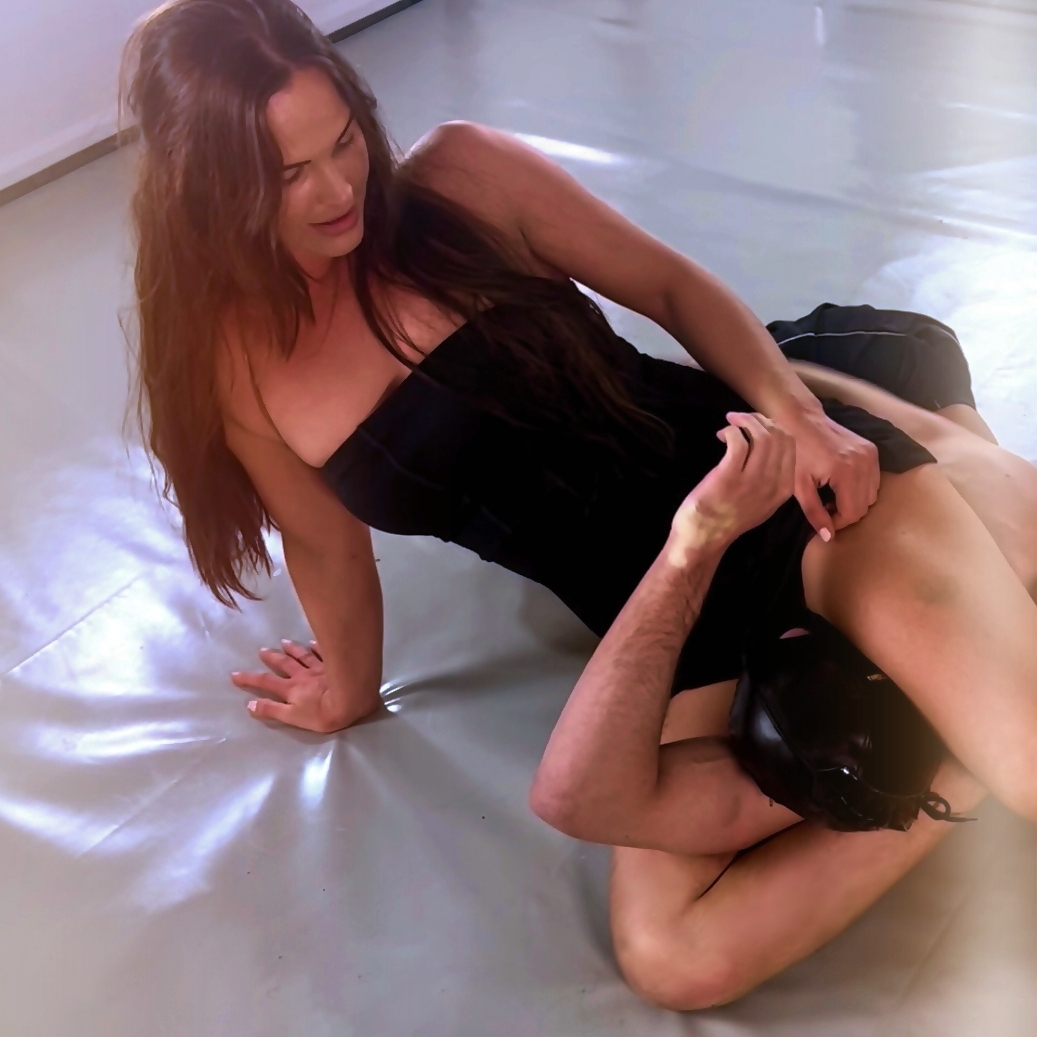A Preference for Dominant, Muscular Women: More Than a Fetish—An Evolutionary Tale
In the intricate mosaic of human evolution, the landscape of attraction and beauty has been molded by the primal imperatives of survival. While modern society often labels a preference for muscular, dominant women as a fetish, it is plausible that this attraction taps into the deep-rooted archetypes of our collective past.
The Survival Imperative
At humanity’s dawn, survival reigned supreme. Early tribal societies revolved around the quest for food, shelter, and protection against environmental threats and hostile tribes. In these contexts, women—particularly during childbirth—were at their most vulnerable. Here, physical strength was more than a mere asset; it was a life-saving advantage for both mother and child.
The Hunter’s Advantage
Women with elevated physical prowess—strength, agility, and stamina—were invaluable assets. They could not only fend off threats but also excel in hunting and gathering. Naturally, men would find these women attractive, knowing that partnering with them would increase the odds of their offspring inheriting these survival-friendly traits.
Collective Survival
But let’s challenge the notion that early humans were strictly monogamous. Survival often demanded a collective approach. While a woman might have given birth, she likely received support from multiple community members, including men. Not all men were built for combat or hunting. Even something as mundane as poor eyesight could disqualify someone from the roles of hunter or warrior.
Strength as an Asset
These physically robust women were the linchpins in a symbiotic relationship with other community members. Their skills in hunting and gathering provided food and protection. In return, men who might not be primary hunters could contribute by caring for the young. This arrangement even suggests that strong women may have naturally assumed leadership roles within these tribal settings.
The Attraction of Power
Not just the non-hunters would be drawn to these alpha women; even the most fit men would prefer strong, capable women who could resist other men’s advances, thereby ensuring the integrity of their genetic lineage.
The Utility Factor
Strong women weren’t just desirable mates; they also had functional roles. Studies suggest that women’s brains are better equipped for multi-variable decision-making, a crucial asset in hunting and combat scenarios. Women’s broader field of vision and innate skills at identifying threats further bolster this point. Archeological findings in different parts of the world support a theory that in certain tribes women often lead the hunts. Men literally carrying out orders.
In Darwin’s Footsteps
To dismiss the allure of strong, muscular women as mere fetishism is to ignore the evolutionary drives behind such preferences. Just as modern values like intelligence or kindness are revered, so too were strength and physical ability in our ancient past.
Modern Misconceptions
I’d go further and argue that modern preferences for vulnerable or submissive women are contra-evolutionary. Such tastes likely became popular after humans had given up the nomadic lifestyle, when patriarchal societies emerged and humans lived in pairs. When men often sought partners who would solely take care of the offspring. Many men then also would preferably have a wife that could be told what to do, simply said. This becoming a likelihood as women increasingly became dependent on men for survival.
Men eventually came to see women as a status symbol, for the purpose of securing their bloodline and as a tool to complement their authority, confidence and dominance for the purpose of (social) power. The weaker a women, the stronger her partner appears. Logically this psychological aspect would increase the desire for fragile, vulnerable wives, in certain men. I imagine most typically in men with social authority, or actively seeking to increase their social position. And perhaps less in men with the practical skills or other means to make a living.
Social Constructs vs. Instincts
Today’s skewed perceptions of female attractiveness are perhaps mostly that—social constructs. However, they don’t automatically convert into ingrained, genetic preferences.
Wrestling with Desire
As a man attracted to muscular, dominant, strong, and/or tall women, you may find solace in the idea that your preferences are rooted in natural instincts. If you are particularly intrigued by the notion of being overpowered or outwrestled, you may wonder about the origins of such desires.
While on an individual level experiences, popular trends and personality undoubtedly play a role, an evolutionary and historical perspective offers an equally plausible explanation that refrains from labeling this inclination as a fetish.
Cave Drawings
As you may be aware, wrestling is one of the oldest forms of combat sports, immortalized in cave drawings that date back 15,000 years. Before the advent of specialized punching and kicking techniques, early humans had already mastered the art of grabbing, pushing, and pulling each other. If ever there were a method to determine the strongest of two individuals, this elemental form of combat would be it. But how does this correlate with the desire to be bested or overpowered by a female?
Mating Rituals
Consider the mating rituals in the animal kingdom. Many species select their mates based on a portfolio of favorable traits. In some birds, for example, the most melodious vocals or dazzling plumage are indicators of superior genetics. Among land mammals, mating often involves physical resistance from the female as a test of the male’s fitness. If she can successfully fight him off or outrun him, he loses his chance. In the context of human interactions, it’s plausible to assume a similar dynamic.
At Her Disposal
Likely, more often than not, females would put up resistance and attempt to fight off males. It’s worth noting that it’s exceedingly challenging for a male to completely overpower any fully resisting female without a willingness to harm her—a prehistoric male would not naturally seek to harm a female, as this would counteract the goals of procreation and offspring survival. A female capable of outwrestling her potential mate gains the power to either reject or accept his advances. Essentially, she dictates the terms of mating. Such a show of strength and resilience on her part would likely ignite a desire to mate within the male, driven by the allure of her preferable genetic makeup.
In summary, what we perceive as fetishistic or niche in today’s world could very well be the echoes of an ancestral drum, beating out the complex rhythms of survival and desire.





